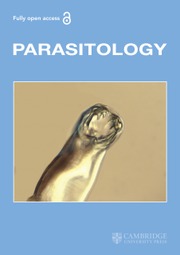Article contents
High diversity and low genetic structure of feather mites associated with a phenotypically variable bird host
Published online by Cambridge University Press: 17 January 2018
Abstract
Obligate symbionts may be genetically structured among host individuals and among phenotypically distinct host populations. Such processes may in turn determine within-host genetic diversity of symbionts, which is relevant for understanding symbiont population dynamics. We analysed the population genetic structure of two species of feather mites (Proctophyllodes sylviae and Trouessartia bifurcata) in migratory and resident blackcaps Sylvia atricapilla that winter sympatrically. Resident and migratory hosts may provide mites with habitats of different qualities, what might promote specialization of mite populations. We found high genetic diversity of within-host populations for both mite species, but no sign of genetic structure of mites between migratory and resident hosts. Our results suggest that, although dispersal mechanisms between hosts during the non-breeding season are unclear, mite populations are not limited by transmission bottlenecks that would reduce genetic diversity among individuals that share a host. Additionally, there is no evidence that host phenotypic divergence (associated with the evolution of migration and residency) has promoted the evolution of host-specialist mite populations. Unrestricted dispersal among host types may allow symbiotic organisms to avoid inbreeding and to persist in the face of habitat heterogeneity in phenotypically diverse host populations.
Keywords
Information
- Type
- Research Article
- Information
- Copyright
- Copyright © Cambridge University Press 2018
Footnotes
Current address: Department of Zoology and Entomology, Faculty of Natural Sciences, University of the Free State, 9301 Bloemfontein, South Africa.
Current address: School of Biological, Earth and Environmental Sciences, University College Cork, Cork, Ireland.
References
- 4
- Cited by


